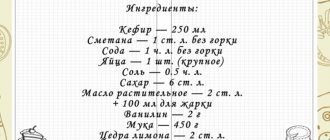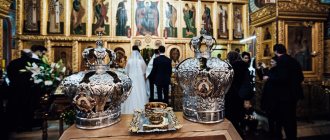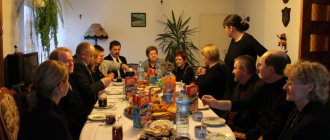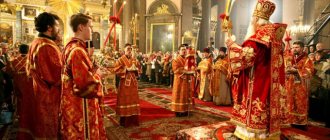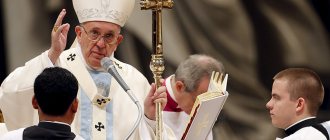What do all funeral services have in common?
Funerals in Orthodoxy are different, but they carry a single meaning - to remember the departed, to facilitate the stay of souls in the afterlife. At funeral services, a prayer is offered for the dead, a petition for pardon of their sins, the granting of eternal life in bliss.
Every memorial service is an opportunity to pray and be heard by Heaven. In the Christian world, it is customary to continue to consider the dead as part of the family, to keep deceased relatives in their hearts and memories. Commemoration in the form of a memorial service, prayer service, or liturgy is of great importance for the deceased and the living. Commemorations help the dead to atone for their sins, while the living fulfill the duty of remembrance of their ancestors.
Church funeral services are a way to offer intense prayer. Participation in various services (memorial services, prayer services, liturgies) that carry their own meaning allows you to use different methods to remember relatives and all deceased Christians.
The article has been verified by the site editors
LiveInternetLiveInternet
Ordering requirements in the Holy Land
Commemoration at the Divine Liturgy
The Church makes the main prayer for the health of the living and the repose of deceased Orthodox Christians at the Divine Liturgy, offering a bloodless sacrifice to God for them.
To do this, before the start of the liturgy (or the night before), you should submit notes to the church with their names (only baptized, Orthodox Christians can be entered). At the proskomedia, particles will be taken out of the prosphoras for their health or for their repose, and at the end of the liturgy they will be lowered into the holy chalice and washed with the Blood of the Son of God as a sign of Christ’s washing away human sins. Let us remember that commemoration at the Divine Liturgy is the greatest benefit for those who are dear to us. An eight-pointed Orthodox cross is usually placed at the top of the note. Then the type of commemoration is indicated: “On health” or “On repose”, after which the names of those commemorated in the genitive case are written in large, legible handwriting (to answer the question “who?”), with clergy and monastics mentioned first, indicating the rank and degree of monasticism (for example , Metropolitan John, Schema-Hegumen Savva, Archpriest Alexander, nuns Rachel, Andrey, Nina).
All names must be given in church spelling (for example, Tatiana, Alexy) and in full (Mikhail, Lyubov, and not Misha, Lyuba).
The number of names on the note does not matter; you just need to take into account that the priest has the opportunity to read not very long notes more carefully. Therefore, it is better to submit several notes if you want to remember many of your loved ones.
By submitting notes, the parishioner makes a donation for the needs of the monastery or temple. To avoid embarrassment, please remember that the difference in prices (registered or plain notes) only reflects the difference in the amount of the donation. Also, do not be embarrassed if you did not hear the names of your relatives mentioned in the litany. As mentioned above, the main commemoration takes place at the proskomedia when removing particles from the prosphora. During the health and funeral litany, you can take out your memorial and pray for your loved ones.
Regarding additional information about the person mentioned in the note, the following must be said. The only thing the priest performing proskomedia needs to know is the name of the Christian given to him at baptism or (for monks) at tonsure, as well as the holy order or degree of monasticism, if any.
Many, however, indicate in their notes before the names some information about the age, rank or position of their relatives, for example, ml. (baby, that is, a child under 7 years old), neg. (adolescent or young woman - up to 14 years old), c. (warrior), bol. (sick, painful), concl. (prisoner, prisoner), put. (travelling, traveling), ub. (killed, killed).
The Orthodox Church does not welcome such a custom, but does not forbid following it. Last names, patronymics, worldly ranks and titles, and degrees of relationship are not indicated in the notes. You should not write “suffering”, “embarrassed”, “needy”, “lost”. In the notes “On Repose” the deceased is referred to as “newly deceased” within forty days after his death.
In addition to general services (liturgy, vespers, matins), in the Orthodox Church there are private services called services (since they are performed upon request, by order of parishioners), including a prayer service (for the living) and a memorial service (for the dead). They are usually performed at the end of the liturgy and are ordered in the same place where they accept notes and sell candles.
A prayer service can be ordered for the Savior (thanksgiving, for the sick, for those traveling, etc.), the Mother of God (for Her various icons) or revered saints - at the request of the parishioner.
God is pleased that we receive help from Him in our needs through prayers to the Mother of God and the saints. So, for example, prayers before the icon of the Mother of God “Inexhaustible Chalice”, to the holy martyr Boniface, righteous John of Kronstadt help against the disease of drinking wine; St. Nicholas the Wonderworker is the patron saint of travelers, helps to marry off daughters, and generally quickly responds to various requests for help; holy warriors Theodore Stratilates, John the Warrior, noble prince Alexander Nevsky and others, as well as John the Baptist, patronize Orthodox warriors; in illnesses we resort for help to the great martyr and healer Panteleimon, the holy unmercenary doctors Cosmas and Damian; the name of many icons of the Mother of God (for example, “Joy of All Who Sorrow”, “Helper of Sinners”, “Softening of Evil Hearts”, “Mammal”, “Merciful”, “Quick to Hear”, “Healer”, “Burning Bush”, “Recovery of the Lost”) ", "Unexpected Joy", "Quench my sorrows", "Look at humility") says that She is our zealous Intercessor before God in various needs.
At the end of the prayer service, the priest usually consecrates the icons and crosses, sprinkling them with holy water and reading a prayer.
The memorial service is served before the eve - a special table with an image of the crucifixion and rows of candlesticks. Here you can leave an offering for the needs of the temple in memory of deceased loved ones.
Notes for a prayer service or memorial service are formatted as follows: the type of note is indicated at the top (for example, “Prayer of thanksgiving to the Savior,” “Prayer to the Vladimir Icon of the Mother of God for health,” “Requiem service”), and then the names are written in the usual order.
In many monasteries there is a special requirement - the commemoration of the living and the dead during the reading of the Psalter (this is an ancient Orthodox custom).
Monasteries and churches accept notes to commemorate living and deceased Christians for 40 days (Sorokoust), for six months and for a year. In this case, the names are recorded in the funeral synodik and the brethren of the monastery or temple during the specified period during each service pray for our relatives.
Realizing that the most we can do for our loved ones (especially the deceased) is to submit a note of remembrance at the liturgy, we should not forget to pray for them at home and perform acts of mercy
Water Blessing Prayer Service
Each of us has moments in our lives when we simply need help from Above. In many everyday situations: in illnesses and illnesses; when applying for a job and at the beginning of any business; at a loss as to what to do and in solving important issues; to preserve the family and when searching for our soul mate, we ask the Lord, the Mother of God and the saints to save, bless, preserve, protect and help us. In the Russian Orthodox Church there is a short service, a special service called MOLEBENA.
Prayer services are held in the temple or private homes. In church they are performed after the liturgy and at the requests and needs of believers. At prayer services, believers submit notes about the health of those people who need help, or thank the Lord, the Mother of God and the saints. During the prayer service, the priest prays for those people who are indicated in the notes. Prayer chants include prayer rites performed for the blessing of various objects, for the healing of the sick, for those heading on a long journey, for warriors, etc. Prayer services are simple and water-blessed. At the water-blessing prayer, water is sanctified - the rite of minor consecration of water takes place.
The Lesser Blessing of Water is also performed by the Church on the day of the Origin (removal) of the venerable trees of the Life-giving Cross of the Lord and on the day of Midsummer, when we remember the words of the Savior, full of the deepest mystery, spoken by Him to the Samaritan woman: “Whoever drinks the water that I will give him will never thirst. ; but the water that I will give him will become in him a fountain of water springing up into eternal life” (John 4:14).
For the small blessing of water, a covered table is placed in the middle of the church, on which a bowl of water is placed and the Cross and the Gospel are placed. Candles are lit in front of the bowl. After the priest’s exclamation, Psalm 142 is read: “Lord, hear my prayer...”. Then they sing: “God is the Lord” and the troparia: “To the Mother of God now we are diligently a priest..., Let us never be silent, O Mother of God...
At the same time, the priest censes water in a cross shape. After reading Psalm 50: “Have mercy on me, O God...”, troparions and litanies, incense is performed at the temple or home.
At the end, the prokeimenon is pronounced and the Apostle is read (Heb. 2:14-18), in which St. Paul says about Christ: “And since the children share in flesh and blood, He also received them, so that through death He might take away the power of him who had the power of death, then there is the devil, and to deliver those who were subject to slavery through the fear of death throughout their lives. For He does not receive angels, but He receives the seed of Abraham. Therefore, He had to become like the brethren in everything, in order to be a merciful and faithful high priest before God, to make propitiation for the sins of the people. For just as He Himself suffered when He was tempted, He is able to help those who are tempted.”
Then the Gospel is read (John 5:2-4): “There is a pool in Jerusalem at the Sheep Gate, called Bethesda in Hebrew, at which there were five covered passages. In them lay a great multitude of the sick, the blind, the lame, the withered, waiting for the movement of the water, for the Angel of the Lord from time to time went into the pool and disturbed the water, and whoever first entered into it after the disturbance of the water recovered, no matter what disease he was possessed by.” The litany is pronounced: “Let us pray to the Lord in peace,” in which petitions are offered for the sanctification of water. Usually this involves censing water.
Then the priest reads a prayer for the blessing of water. Sometimes a special prayer is also read: “Great God, work miracles, they are countless! Come now to Your servants who pray to You, O Master, and eat of Your Holy Spirit and sanctify this water: and grant to those who drink from it, and to Your servants who receive and sprinkle themselves with it, change from passions, remission of sins, healing from illness, and liberation from all evil, and strengthening and sanctification of the house and cleansing of all defilement, and driving away the slander of the devil: for blessed and glorified is Thy most honorable and magnificent Name, of the Father and the Son and the Holy Spirit, now and ever, and unto the ages of ages. Amen".
After reading the prayers, the priest, taking the honorable Cross with the Crucifix towards himself, makes a cross-shaped movement with its lower part on the surface of the water, then immerses the entire Cross in the water. At the same time, the troparia are sung: “Save, O Lord, Thy people...” (three times) and “Thy gifts...”.
Then the priest kisses the Cross taken out of the water and sprinkles all those present and the entire church. Those present venerate the Cross, and the priest sprinkles each one. After the blessing of water, everyone who ordered a prayer service can receive holy water.
After the prayer service, parishioners take holy water with them and it can and should be used, sprinkled on the home (place of work) and any thing. (“About the existence of this water that is healing for souls and bodies and all resistive forces that drive away...” from the follow-up to the minor consecration of water). This means that the Grace of the Holy Spirit, which is sent to the water during its consecration, has healing properties and drives away evil spirits.
Prayer for health
What is a prayer service? This is a short service in which believers, according to their particular needs and circumstances, turn in prayer to the Lord God, the Mother of God and the saints. During the Divine Liturgy we hear petitions for everyday needs, but often we do not perceive them as we should because of the deepest mystical content of the liturgy. The need to pray “for small things” as St. Ambrose of Optina taught—“briefly, but passionately”—is fulfilled by us at the prayer service.
Are we sick? - We will serve a prayer service for the sick. Are we starting something important? — At the prayer service we will ask for God’s help. Are we going on a journey? - Let's listen to the rite of blessing for the journey. Has your name day arrived and you want to fervently pray to your saint? Let's order a prayer service for him. Is the school year starting and is it time for our children to go to school? — Let us perform the rite of blessing at the beginning of the youths’ teaching. Has the Lord heeded our prayer and we want to offer praise? — We will serve a thanksgiving prayer.
In addition to private prayer services, there are also national prayer singing. The church contains many of these - water-blessing and New Year's; during dry periods (in case of bad weather) and lack of rain (in case of drought); prayers for those suffering from unclean spirits and the disease of drunkenness; solemn rites on the first Sunday of Great Lent (Triumph of Orthodoxy) and on the Nativity of Christ...
At prayer services we turn to the Lord Jesus Christ, His Most Pure Mother, and the saints. Prayer chants of thanksgiving are addressed to the Lord. When ordering a prayer service behind a candle box, we submit a note with the names of those for whom (or from whom) it will be performed.
Sometimes a person ordering a prayer service does not wait for it to be completed and leaves the temple, leaving only a note. The Lord accepts every sacrifice, but it is much more effective to pray with a priest than to leave him to beg God for us.
Sometimes akathists and canons are added to prayer services. Often, priests, completing the service, anoint those praying with blessed oil and sprinkle with holy water.
According to our faith, the Lord gives His help very soon after the prayer service. Therefore, there is no need to abuse this sacred rite by ordering a prayer service several times for one reason (with the exception of prayer for the sick and serving votive prayer services).
Prayer for repose
Lord, Lord! You are righteous, and Your judgment is righteous: You, in Your eternal Wisdom, have set the limit of our life, which no one will pass. Wise are Your laws, unsearchable are Your ways! You command the angel of death to remove from the body the soul of a baby and an old man, a husband and a young man, a healthy and a sick person, according to Your unspeakable and unknown to us destinies; but we believe that this is Your holy will, beforehand, according to the judgment of Your righteousness, You, Most Good Lord, as the all-wise and omnipotent and omniscient Physician of our souls and bodies, send illnesses and ailments, troubles and misadventures to man, as spiritual healing. You strike him and heal him, you put to death what is dead in him and give life to the immortal, and, like a loving Father, you punish him even if you accept him: we pray to You, O Lord who loves mankind, accept Your servant (Your servant) (name) who has come to You, whom You have sought Thou art, by Thy love for mankind, who punished with grave bodily illness, to save the soul from mortal illness; and if all this has been received from You with humility, patience and love for You, as the all-powerful Physician of our souls and bodies, show him (her) this day Your rich mercy, as he who has endured all this sin of his for the sake of. Impute to him (her), Lord, this temporary serious illness as some kind of punishment for the sins committed in this vale of tears, and heal his (her) soul from sinful ailments. Have mercy, Lord, have mercy on the one you have sought, and, punished temporarily, I pray to You, do not punish him with the deprivation of Your eternal heavenly blessings, but grant him (s) the right to enjoy them in Your Kingdom. If the deceased Thy servant (Thy servant), without reasoning within himself, for the sake of this was the touch of Thy healing and providential Hand, obstinately speaking to himself, or, out of his unreasonableness, grumbling in his heart, like this burden consider yourself unbearable, or, due to the weakness of your nature, suffering from a long illness and upset by a misfortune, we pray to You, Long-suffering and Much-Merciful Lord, forgive him (her) this sin according to Your boundless mercy and Your unconditional mercy towards us sinners and unworthy Thy servants, forgive for the sake of Your love for the human race; If his (her) iniquity exceeds his (her) head, but illness and illness do not move him (s) to full and sincere repentance, we beg You, the Author of our life, we beg You with Your redemptive merits, have mercy and save, Savior, slave Thine (Thy servant) from eternal death. Lord God, our Savior! You, by faith in You, granted forgiveness and remission of sins, granting pardon and healing to a weakened man of thirty years old, when you said: “Your sins are forgiven you”; With this faith and hope in Your goodness, we resort to Your, O Most Generous Jesus, ineffable mercy and in the tenderness of our hearts we pray to You, Lord: for now and today, this is the word of pardon, the word of remission of sins to the deceased, to the ever-remembered (- my) by us to Thy servant (Thy servant) (name), may he be healed spiritually, and may he dwell in a place of light, in a place of peace, where there is no sickness, no sorrow, no sighing, and may his (her) illnesses and ailments be replaced there, tears of suffering and sorrow into a source of joy about the Holy Spirit. Amen.
Prayer for health
O my Lord, my Creator, I ask for Your help, grant healing to the servant of God (name), wash her blood with Your rays. Only with Your help will healing come to her /him/. Touch her /him/ with miraculous power, bless all her /him/ paths to salvation, recovery, healing. You will give her /him/ health to her body, her /him/ soul - blessed lightness, her /him/ heart - divine balm. The pain will subside, and strength will return, and her/his/ physical and mental wounds will heal, and Your help will come. Your rays from Heaven will reach her /him/, give her /him/ protection, bless her /him/ for healing from her illnesses, strengthen her /him/ faith. May the Lord hear this prayer. Glory and thanks to the power of the Lord. Amen.
Candle of repose
In the Orthodox Church, it is customary to place candles for the repose of the dead in front of the Lord’s crucifix, with which the Savior delivered the human race from eternal death, and with His Resurrection gave humanity eternal life. Approaching the crucifix and the square candlestick (tetrapod) located in front of it, you need to light your candle from any burning candle located on the candlestick and place it in an empty cell.
At the same time, a believer must read at least a short prayer (not necessarily out loud): “Rest, O Lord, the soul of Your departed servant (name).” In this case, the candle we light will be an expressive evidence of our living participation in the hope of the Church for the future blessed life of the deceased person for whom we are praying.
Candle for health
When praying for ourselves or for the health and well-being of our loved ones, after lighting a candle, we must definitely invoke the name of the saint or saint in front of whose icons we place candles. For example, “Most Holy Theotokos, save us!” Or: “Reverend Father Sergius, pray to God for me and for the servants of God (name).”
A person who accidentally, out of ignorance, placed candles for health on a tetrapod (candlestick for funeral candles) has no reason for unbridled despair. According to the word of the Holy Scripture, “all are alive with God.”
Sorokoust about repose
Sorokousty, writes St. Simeon of Thessalonica, - are performed in remembrance of the Ascension of the Lord, which happened on the fortieth day after the resurrection, - and with the purpose that he (the deceased), having risen from the grave, ascended to the meeting. Judge, he was caught up into the clouds, and so he was always with the Lord.” The first Apostles legitimized in the Church of Christ the Old Testament custom of mourning the dead for forty days. On the basis of this, the Holy Church, from ancient times, established the rule of commemorating the dead for forty days and especially on the fortieth day. Just as Christ defeated the temptations of the devil, spending forty days in fasting and prayer, so the Holy Church, offering prayers, alms and bloodless sacrifices for the deceased for forty days, helps the deceased by the power of God to defeat the airy prince of darkness and receive the Kingdom of Heaven.
Sorokoust “For Repose” we ask you to pray for your departed relatives, friends, teachers, well-wishers, everyone who is dear to us. Just as we pray for the living, so we must pray for the dead - and not only for our closest relatives, but also for our entire family, for everyone who did good to us in earthly life, helped, taught. The dead, although they have departed from us, although they remain flesh in the earth, but in soul with the Lord, have not disappeared, they continue to live a spiritual life invisible to us before the eyes of God, since the Lord Himself says in the Holy Gospel: “God is not the God of the dead.” , but alive, for with Him all are alive” (Luke 20:38). We believe that our deceased relatives, and we often do not know the names of many of them, are praying for us, their descendants.
Sorokoust about health
“Sorokoust” is a custom-made commemoration of health or repose. Within forty days, if the liturgy is served, at the proskomedia a piece is taken from the prosphora for the person whose name is indicated in the note. Then this particle, together with others, is immersed at the end of the liturgy in the Blood of Christ, while the priest prays: “Wash away, O Lord, the sins of those who were remembered here by Thy honest Blood, by the prayers of Thy saints.” Thus, all commemorated people, both living and deceased, participate in the liturgy, that is, a thanksgiving sacrifice is offered to God for them. This is possible for a person (both living and dead) to participate fully in the Divine life. Only people baptized in the Orthodox Church can take part in the Sacrament of the Eucharist (liturgy), and accordingly, only baptized people can be written in notes submitted for proskomedia.
Sorokoustas can be ordered at any time, there are no restrictions on this. Only during Lent, when the full liturgy is celebrated much less frequently (only on Saturday and Sunday), is it better to order not magpies, but simply submit notes of health or repose each time. In some churches there is such a practice as commemoration during Lent, when throughout Lent, during services in the altar, notes are read, and when the liturgy is served, particles are taken out.
Memorial service
Requiem (also pannihida; parastas; Greek μνημόσυνο; from Greek παννυχίς - “all-night vigil”) is the name of the funeral service historically accepted in Russian Orthodoxy; It can be either a private service (treba) or a public one. It is incorrect to mix it with the rite of burial (funeral service).
In its structure it is a funeral matins (which, apparently, is the reason for the name) with lithium. It can be performed in the house of the deceased, in a temple and at the grave: on the 3rd, 9th, 40th day after death, as well as the anniversary of his death, on his birthday and name day.
The funeral litiya (the final part of the memorial service) is sent before the body of the deceased is taken out of the house, when the body is met in the vestibule of the church, upon the return of relatives to the house after burial, and in other cases.
The final chant of the memorial service is Eternal Memory, which is often sung by all those present.
When performing a memorial service, a kolivo (kutia) is placed on the kanun (a low table with a crucifix), which, after being blessed by the priest, is eaten by all participants in the memorial service.
Memorial services performed on Ecumenical Parental Saturdays are called Ecumenical:
Meat Saturday - eight days before the start of Lent, on the eve of the Week of the Last Judgment. Trinity Parental Saturday - on the eve of the Holy Trinity, on the ninth day after Ascension
Divine services at the Gornensky convent
Olivet Orthodox Convent and Church of the Ascension
Russian Orthodox Gethsemane Convent and Church of St. Mary Magdalene Equal to the Apostles
Memorial service
A memorial service is also a funeral service, only it is served an unlimited number of times, possibly daily. We say goodbye to the deceased once, during the funeral service, but we need to pray for the repose of the soul of a loved one for the rest of our lives.
Usually a memorial service is performed in the next 3 or three days after death, 9 and 40 days after it. Then on significant dates for the deceased: the anniversary of death, birthday, name day. It is not forbidden to serve a memorial service at home, at a grave or in a church. The requiem in an abbreviated version is called litia, and any baptized person can read it.
For whom funeral prayers should not be ordered
We are all children of God, but there are those who made a different choice during life and after death a meeting with God will be difficult for him. Therefore, the church does not make prayer requests for their repose:
- suicides (in some cases, you can still receive a blessing from the clergy for the funeral service for a suicide, for example, if the fact of suicide has not been proven or it was committed by a mentally ill person);
- atheists;
- unbaptized;
- Gentiles.
There are 2 days in the Orthodox calendar when commemorations of all baptized deceased occur - Ecumenical Parental Saturdays. But you need to visit the temple and order funeral services on other days, because the more often you hear a prayer for a loved one after his death, the easier his fate in the next world. When a living person prays for deceased loved ones, his sadness becomes lighter and comfort is found.
